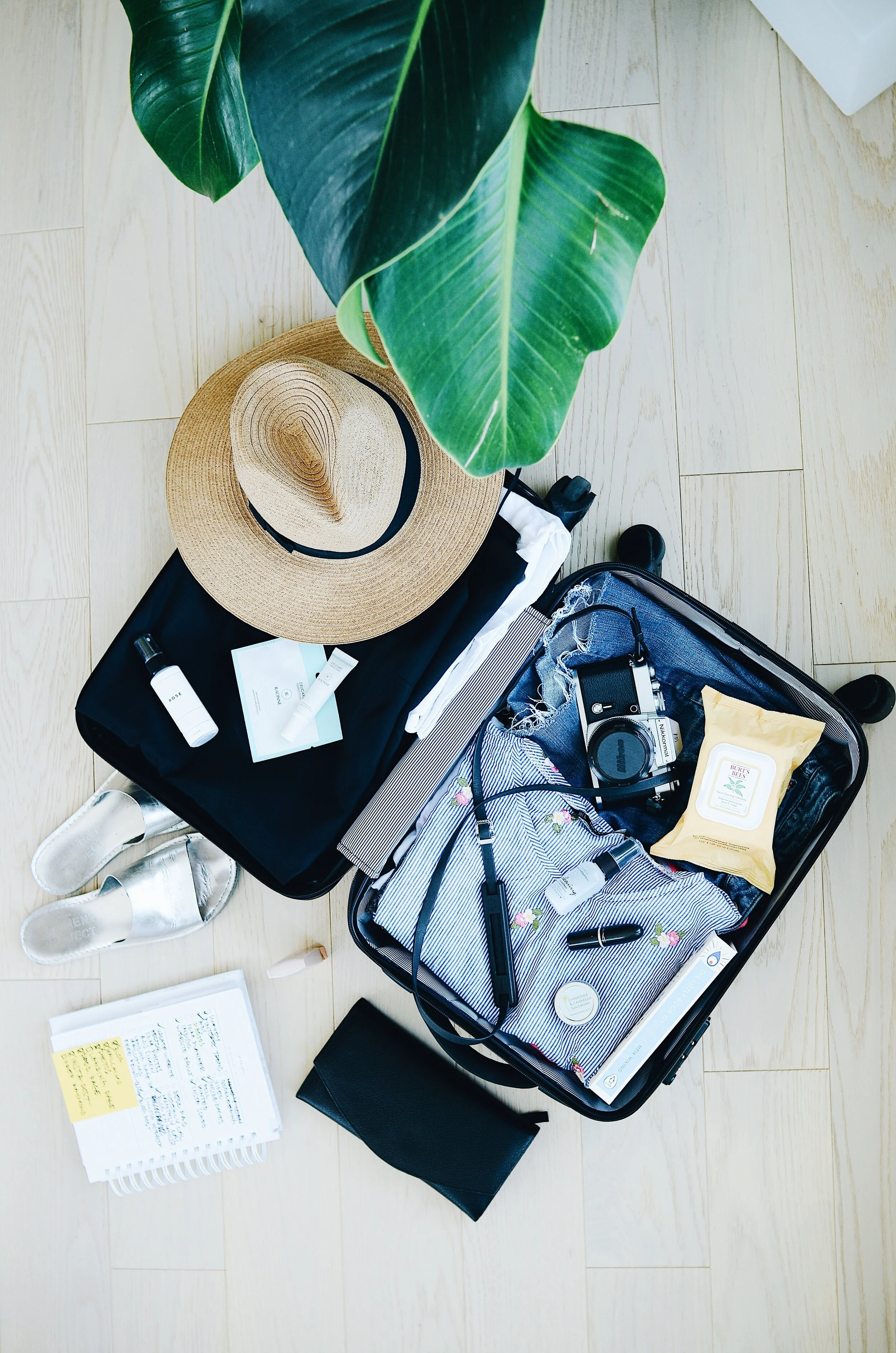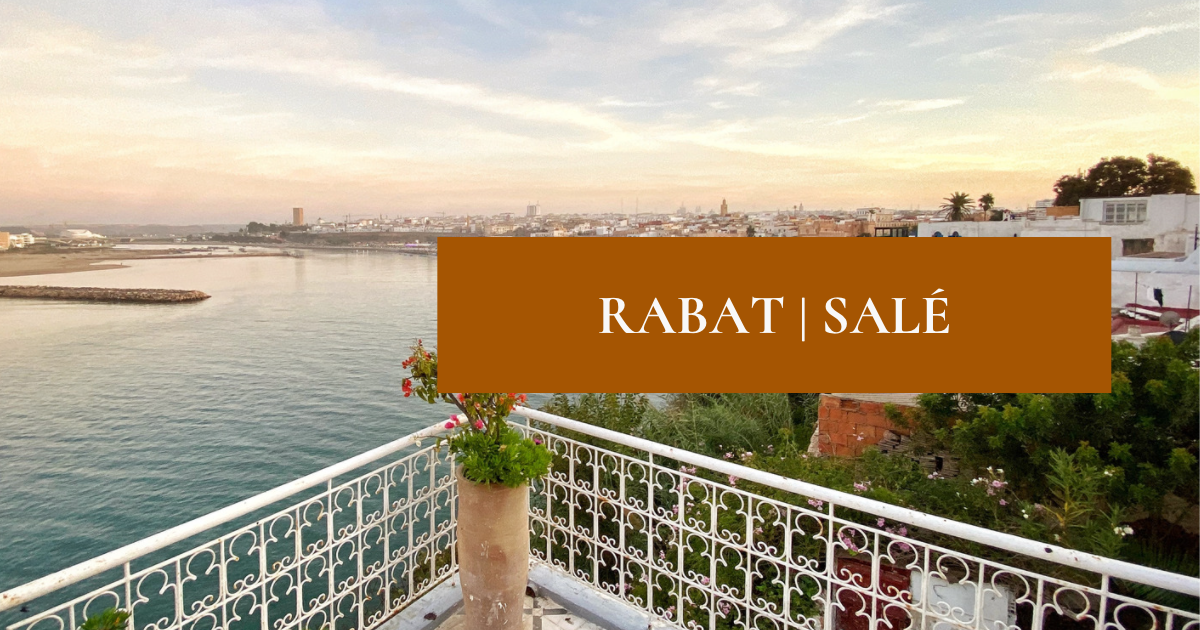Packing for Your Trip to Morocco
Updated June 2024
Whenever we are planning to travel, one of the things we have to think about is packing. Are you someone who makes a packing list and diligently checks off every item well in advance of the night before? Or are you a last-minute scrambler, throwing everything in the bag and hoping you didn’t forget anything? I have traveled a great deal over the years, and have vacillated between those two extremes depending on the trip and season of life I was in. But with this post, I want to help you think about packing for your trip to Morocco with three things in mind: respect, weather, and activities.
1. There is no dress code for Morocco. However, you may want to think about your clothing choices in terms of being respectful.
First, there is no dress code for Morocco. Technically, you can wear whatever you want. However, as a cultural exchange that values respecting other cultures, we really don’t advise you to do that. Morocco is a Muslim country that is really open to the West, which means that some people will be dressed extremely conservatively, while others will be dressed in clothing that may surprise you in a Muslim country. There is a pretty big difference between what you can get away with wearing comfortably in the cities (Marrakech and Casablanca) and what you can/should wear in smaller towns and more rural areas. Cities have an almost “anything goes” mentality, where rural areas are more modest.
Do women need to cover their hair in Morocco? No, if you are not Muslim, then you really don’t need to think about covering. Moroccans will not expect visitors to dress how they do. But for women, the best way to be respectful is to dress modestly, which in this context means not showing much skin and skipping most tight-fitting clothes. In particular, you won’t want to show much skin of your shoulders, chest, or legs (especially above the knees, but it’s even better if you don’t show skin abouve your ankles). In general, it is a good idea to wear tops that come down over the rear end in the back, or a longer sweater or kimono over a t-shirt. See Maroc Mama’s thoughts on how to dress in Morocco here.
For men, you may wear shorts, but they really should come down to your knees. The beach or pool is the only place you should be shirtless. Other than that, you have it easy and shouldn’t have to think to much about what you can and can’t wear in Morocco!
2. The weather varies greatly based on time of year and location in the country.
I know you probably think that Morocco is hot, but that is not necessarily true! Morocco has an arid climate, like California, and so you can actually expect big temperature variations from day to night. Coastal regions have very temperate climates
Winter: November through February are definitely the cooler season, and mountain regions and the desert can even get snow! The word for “winter” in the local Arabic is the same as the word for “rain” so definitely come prepared for it to rain. Layers are your friend in the cooler months, as the temperature variation can be 40+ degrees Fahrenheit from day to night! Something I was unprepared for about winter in Morocco is how cold it is INSIDE. Daytime in the sun is very comfortable, but in Fes, we had to put our winter coats back on when we went INSIDE.
Spring: March through May are my favorite months in Morocco. The weather finally warms up and the flowers are so beautiful it is ridiculous! However, there is usually an intense heat wave in May before spring ends completely and brings on the long, hot days of summer. Nights will still be cool in the spring, so again, layers are your friend. A lightweight rain jacket may also come in handy for the cooler evenings and potential rain shower or two. But it will likely be warm enough in the day for sandals and short sleeves.
Summer: June through September are the peak of summer. It is not unusual for people to travel to the coast or out of the country during August, when the heat is its most intense. I won’t sugarcoat it for you: summer will be hot, and most places do not use air conditioning or fans. Your hotel or riad will probably have AC, but public spaces will likely not. This means you need to plan your schedule to include downtime in the most intense afternoon hours, and pack lightweight, light-colored fabrics (cotton and linen for the win!) and clothing (for women, flowy clothes and midi and maxi dresses).
Fall: In my experience, fall gets the short end of the stick in Morocco as we seem to go from hot to cold very quickly. It can still feel like summer during the day until mid-November, but temperatures do get lower at night in October. Layers will be your friend again in the fall.
Maroc Mama is a great resource for all things weather and packing. This page will help you find general weather forecasts for the month when you plan to visit. For a more precise information, check out 10-day forecasts on your destination cities here.
3. Keep your activities in mind when you pack.
Obviously, you will pack differently for a beach vacation than for a ski trip (and there is skiing in Morocco!) So when you are thinking about what you need to pack, take a minute to think about the activities you’ll be doing during your trip. Will you go swimming? Ride dune buggies in the desert? Go hiking? There may be some specific things you need to bring based on those activities.
For everyone, on every trip
Shoes - Whatever else you plan to do, you will need to bring a good pair of shoes for walking.
Documents - Don’t forget your important travel documents, including an extra photocopy of your passport. Your passport needs to have at least 6 months of validity, as well as space for your stamps.
Electronics - Be aware that outlets in Morocco are 220V with types C and E plugs, which means you may need electronic adapters and not all of your electronics may work (like a hairdryer). Check the label on your electronic device to see the usable voltage range; many devices now-a-days are designed to work between 100-240V, but there are exceptions. If your device needs a voltage converter, either A) plan to bring one from home, as voltage converters are very hard to find in Morocco, or B) buy the device when you arrive in country.
Bathrooms - Not all bathrooms will come equipped with toilet paper and soap, so travel size toilet paper or tissues and hand sanitizer is a wise idea. While most places will have Western toilets, you will probably encounter some squat toilets.
Water Bottles - It would probably be helpful to have a refillable water bottle. You can buy bottled water everywhere, but it is cheaper to buy the one or five liter bottle and refill your own water bottle. A five liter bottle costs about 12 Dh.
Sunscreen - You also need to bring sunscreen, as the sun is quite strong in Morocco, and the sunscreen available here is probably more expensive than getting your preferred brand back home.
Toiletries - Don’t count on your lodging providing toiletries, as what they offer is extremely basic. You can find most things in Morocco; the exception in makeup, which is less available without going to a specific store, and is almost sure to be more expensive. Colgate toothpaste is also more expensive here than in the US.
Laundry - For a longer trip, it may be possible to do laundry at your hotel, riad, or Airbnb.
For the beach
For women, if you want to wear a two-piece bathing suit (especially a bikini) you will probably get a lot of stares. However, Moroccan beach communities tend to be pretty open-minded and laid back, so less modesty is okay.
For the desert
The situations for staying in the desert can be different—camping, glamping, or just staying in a auberge (hotel). Keep your lodging situation in mind when you are planning your packing. However, it is a good idea to pack light for the desert portion of your trip; no one wants to take a 50 lb. suitcase on a camel! Also, bear in mind that just because it is the Sahara doesn’t mean it will automatically be hot. The time of year matters here, as in the winter months it can be warm during the day, but quite cold at night. You may want to consider layering your clothing to be ready for the temperature variations during the day.
If you have more questions about packing for your Moroccan adventure, please do not hesitate to comment below or contact us!
Are you visiting Morocco soon? Start your travels with us to learn some Moroccan Arabic phrases and cultural dos and don’t and to have the best trip available to you.

































Morocco is a very unique country for several reasons. The first is its strategic location in the northwest of the continent of Africa, just 14 kilometers south of Europe. This beautiful country is bordered by the Mediterranean Sea in the North, the Atlantic Ocean in the West, Algeria to the East, and Mauritania to the South. For this reason, Morocco is a crossroads where cultures, civilizations, and ethnicities meet.